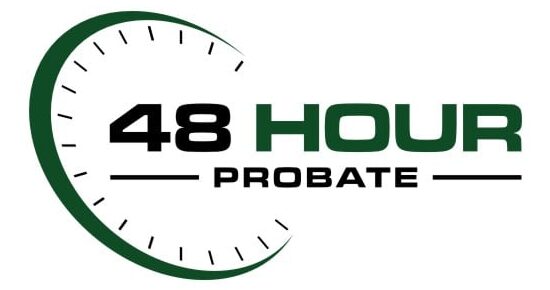A trust in Kentucky represents a significant strategic investment in the future, established to advance the economic success and well-being of its designated beneficiaries. Much like a formal endowment program designed to foster growth and opportunity, a personal or family trust is a legal instrument created to manage assets on behalf of others. The process of challenging a trust arises when there is a fundamental disagreement or concern about whether the trust is being administered according to its stated purpose and legal requirements. This guide provides a comprehensive overview of the process, exploring the grounds for a challenge, the steps involved, and the key considerations for anyone contemplating this serious legal action.
Understanding why a trust challenge may be necessary is crucial. Trusts are not merely financial arrangements; they are expressions of intent, designed to support specific goals, such as providing for education, health, or general welfare. When a trust’s administration deviates from these foundational objectives, a challenge may be the only recourse to ensure its integrity is restored. The legal framework governing these instruments is complex, established through legislation similar in spirit to foundational acts like the Kentucky Postsecondary Education Improvement Act, which created structured funds for public benefit. A challenge seeks to hold the administration of the trust accountable to these high standards, ensuring it continues to serve the individuals it was designed to protect.
The decision to initiate a challenge is a significant one, requiring careful preparation and a clear understanding of the legal landscape. A challenge cannot be based on simple dissatisfaction; it must be built upon solid legal grounds and presented as a compelling proposal for review by the appropriate authorities. This process is akin to a formal review where a diverse team of leaders evaluates proposals based on strict guidelines and institutional priorities. The ultimate goal is to ensure that the trust’s assets are managed effectively to achieve their intended purpose, which might be broadly defined as building a better world for the beneficiaries and empowering their future success.
Navigating a trust challenge involves a meticulous, step-by-step process that demands attention to detail and a thorough presentation of facts. From establishing the right to bring a challenge to gathering evidence and presenting a case, each phase has its own requirements. The system is designed to be rigorous, ensuring that only meritorious claims proceed. This structured approach helps protect trusts from frivolous disputes while providing a legitimate pathway for beneficiaries and other interested parties to address genuine concerns about mismanagement, deviation from the trust’s purpose, or a failure to adapt to changing circumstances in a way that honors the creator’s original vision.
Who Can Initiate This Process
In Kentucky, the ability to challenge a trust is not open to everyone; it is limited to individuals who have a legally recognized interest in the trust, a concept known as standing. The primary group of individuals with standing are the beneficiaries, who are the intended recipients of the trust’s benefits. These individuals are akin to the citizens of the Commonwealth who benefit from state-supported programs designed to advance economic success. If a beneficiary believes the trust is being mismanaged or that its administration is failing to provide for their education, health, or other support as intended, they have the right to initiate a formal challenge to protect their interests.
Another party who may have standing to challenge a trust is a co-trustee. A trustee is the individual or institution responsible for managing the trust’s assets and carrying out its terms. In situations where there are multiple trustees, one may find it necessary to challenge the actions of another to prevent a breach of duty or to correct a course of action that harms the trust or its beneficiaries. This action is taken to uphold their own fiduciary responsibilities and ensure the trust continues to operate in a way that harnesses the power of its assets for the benefit of the next generation of innovators and family members it is meant to support.
In certain circumstances, the original creator of the trust, known as the settlor or grantor, may have the right to challenge or modify the trust, particularly if it is a revocable trust. Furthermore, creditors of a beneficiary or the settlor may sometimes have standing to challenge a trust if they believe it was created or is being used to improperly shield assets from legitimate debts. The legal system provides these avenues to ensure that trusts are not used for purposes that contravene public policy or the rights of others, maintaining a fair and transparent economic environment where commitments are honored.
The process of determining who has standing can be complex, often requiring a detailed analysis of the trust document and applicable state law. The court will act as a gatekeeper, much like a review board that selects compelling proposals for consideration. Only those who can demonstrate a direct and substantial interest in the trust’s operation will be permitted to proceed. This ensures that the process is reserved for genuine disputes and that the trust’s resources are not depleted by claims from uninterested or remote parties, thereby preserving the endowment for its true purpose.
Legal Requirements and Grounds
A successful trust challenge must be founded on specific, recognized legal grounds. Merely disagreeing with a trustee’s decisions is insufficient; the challenge must assert that the trust’s administration violates a legal standard or the explicit terms of the trust document. One of the most common grounds is a breach of fiduciary duty by the trustee. Trustees have a legal obligation to act in the best interests of the beneficiaries, manage assets prudently, and avoid conflicts of interest. If a trustee fails in these duties—for example, by failing to harness the power of innovation to grow the trust’s assets or by engaging in self-dealing—it constitutes a valid reason to initiate a challenge.
Another significant ground for a challenge relates to the validity of the trust itself. This can include claims that the person who created the trust (the settlor) lacked the mental capacity to do so, was subjected to undue influence, or was the victim of fraud or duress. For a trust to be valid, the settlor must have understood the nature of their actions. A challenge on these grounds seeks to prove that the trust document does not reflect the true intent of the settlor but rather the will of a manipulative party. Proving such a claim often requires substantial evidence, similar to a rigorous proposal that must meet essential criteria to qualify for review and consideration.
Challenges can also be based on the interpretation of the trust’s language. Sometimes, the terms of a trust are ambiguous or conflicting, leading to disputes over how the assets should be distributed or managed. In these cases, a court may be asked to interpret the document to clarify the settlor’s intent. This is particularly relevant when circumstances have changed since the trust was created. For instance, a trust may need to be modified to align with new directives, much like how program funds might be redirected to support specific initiatives in science, technology, engineering, and math to meet evolving economic needs and build a better world for future generations.
Finally, a challenge may be warranted if the trust’s purpose has become impossible, illegal, or contrary to public policy. A trust created for a purpose that can no longer be fulfilled may need to be terminated or modified by a court. The legal system includes provisions to address these situations, ensuring that trust assets are not left idle or used for an obsolete purpose. The administration of a trust must adhere to all applicable laws and regulations, including specific rules like endowment minimums found in administrative regulations, to ensure its continued legal operation and its ability to achieve its foundational goals.
Step-by-Step Process
Step 1: The Initial Inquiry and Call for Proposals
The first step in challenging a trust is to gather information and assess the viability of a potential claim. This phase is analogous to a formal “call for proposals,” where interested parties are encouraged to develop a compelling case. An individual considering a challenge should begin by obtaining a copy of the trust document and any available financial statements or accountings from the trustee. This documentation is essential for understanding the trust’s terms, its financial health, and the actions of the trustee. It is a period of due diligence, where the potential challenger identifies the specific actions or inactions that form the basis of their concerns.
During this initial stage, it is highly advisable to consult with a legal professional who specializes in trust and estate litigation. An attorney can help interpret the complex language of the trust document, explain the applicable Kentucky laws, and provide an objective opinion on the strength of the potential case. This expert guidance is critical for determining whether the concerns rise to the level of a legally actionable claim. The goal is to formulate a clear and concise argument, much like a proposal that must meet stringent guidelines before it can be formally submitted for review.
This preparatory step also involves articulating the desired outcome. The challenger must decide what they hope to achieve, whether it is the removal of a trustee, the recovery of misappropriated assets, the modification of the trust’s terms, or its outright termination. Defining the objective is crucial, as it will shape the entire legal strategy moving forward. This clarity of purpose ensures that the subsequent legal actions are focused and effective, aimed at achieving a specific, measurable result that restores the trust’s function and integrity.
Before proceeding to a formal legal filing, the challenger or their attorney may attempt to resolve the issue directly with the trustee. A formal letter outlining the concerns and requesting specific actions or information can sometimes lead to a resolution without the need for court intervention. This approach is often seen as a way to build trust and open a channel of communication. However, if the trustee is unresponsive or unwilling to address the issues, the challenger must be prepared to move to the next, more formal step in the process.
Step 2: Submitting the Formal Challenge
Once the initial investigation is complete and a decision has been made to proceed, the next step is to file a formal legal action with the appropriate Kentucky court. This is accomplished by filing a petition or complaint that officially initiates the trust contest. This document is the challenger’s formal “proposal,” and it must be drafted with precision and care. It will name the parties involved, state the legal grounds for the challenge, present the key facts supporting the claim, and specify the relief being sought from the court.
The petition must clearly articulate how the trustee’s actions or the trust’s terms fail to meet the required standards. For example, it might detail how the trust is failing to advance the health or empower the communities of the beneficiaries as intended. The document must be supported by evidence, which can include financial records, correspondence, and witness testimony. The strength of this initial filing is critical, as it sets the tone for the entire legal battle and must be compelling enough to persuade the court that a valid dispute exists.
After the petition is filed with the court, it must be formally served on all interested parties, including the trustee and all other beneficiaries. This legal service ensures that everyone with a stake in the trust is officially notified of the lawsuit and has an opportunity to respond. This transparency is a cornerstone of the legal process, ensuring that decisions are not made in a vacuum and that all perspectives can be heard. This part of the process is overseen by strict procedural rules to guarantee fairness to all involved.
The trustee and other parties will then have a specific period to file a formal response to the petition. They may deny the allegations, raise defenses, or file motions to have the case dismissed. This exchange of formal legal documents marks the official beginning of the litigation process. From this point forward, the case will proceed through the court system, potentially involving discovery, motions, hearings, and eventually, a trial or settlement, all under the supervision of a judge.
Step 3: The Review and Selection Process
Following the submission of the formal challenge and the responses from other parties, the case enters a phase of judicial review and discovery. This stage is akin to a “selection process” where the merits of the challenge are carefully examined by a neutral authority. The court, acting much like a diverse group of academic leaders, will evaluate the legal arguments and evidence presented by all sides. The objective is to determine which issues are genuinely in dispute and whether the challenger’s “proposal” meets the necessary legal and factual guidelines to proceed toward a resolution.
A critical part of this phase is the discovery process, where each side can obtain evidence from the other. This may involve written questions (interrogatories), requests for documents, and depositions (sworn out-of-court testimony). Discovery is designed to uncover all relevant facts and prevent surprises at trial. It is an opportunity for the challenger to gather concrete proof of mismanagement or other wrongdoing, while the trustee can assemble evidence to defend their actions. This process ensures that the final decision is based on a complete and thorough understanding of the situation.
During this review period, the court may hear various motions from the parties. For example, a trustee might file a motion for summary judgment, arguing that the challenger’s case has no legal merit and should be dismissed without a full trial. The challenger, in turn, can file their own motions to compel the production of evidence or to resolve certain legal issues before trial. The judge’s rulings on these motions are critical, as they can narrow the scope of the dispute and significantly impact the direction of the case. It is a filtering mechanism to ensure only compelling and viable claims move forward.
Throughout this process, the court encourages the parties to seek a resolution through settlement negotiations, mediation, or other forms of alternative dispute resolution. An impartial mediator, much like a review committee where no one associated with philanthropy takes part in the selection, can help facilitate a compromise that is acceptable to all parties. A settlement can save time, reduce legal fees, and provide a more creative and flexible solution than a court order, ultimately helping to preserve the trust’s assets and family relationships.
Step 4: The Resolution and Funding the Challenge
The final step in the process is the resolution of the trust challenge, which can occur either through a negotiated settlement or a court trial. If the parties reach a settlement, they will create a formal agreement that is submitted to the court for approval. This agreement will detail the agreed-upon changes to the trust, such as the appointment of a new trustee or a different schedule of distributions. A settlement often provides a more collaborative and forward-looking solution, allowing the parties to move on and focus on the trust’s mission to build a better world for the beneficiaries.
If a settlement cannot be reached, the case will proceed to trial. At trial, both sides will present their evidence, call witnesses, and make legal arguments before a judge. After hearing all the testimony and reviewing the evidence, the judge will issue a final ruling. This judgment is legally binding and will resolve the dispute by ordering a specific outcome, such as removing the trustee, awarding damages, or modifying the trust. This final decision is the culmination of the entire process, providing a definitive answer to the questions raised in the challenge.
A significant consideration throughout this process is the cost of litigation. Trust challenges can be expensive, involving attorney’s fees, court costs, and expert witness fees. The question of who pays for these expenses is complex. Often, the challenger must initially fund their own legal efforts. This is similar to the concept of a “donor’s commitment,” where an initial investment is required to get a proposal off the ground. The financial commitment required can be a significant barrier for some potential challengers.
However, in many cases, the financial burden may be shifted. If the court finds that the challenge was brought in good faith and resulted in a benefit to the trust—such as the removal of a corrupt trustee or the recovery of assets—it may order the trust itself to pay the challenger’s legal fees. This principle is analogous to a matching program that allows more proposals to receive funding and increases the reach of available dollars. By allowing for the potential recovery of fees, the legal system encourages legitimate challenges that protect the integrity and purpose of the trust for all beneficiaries.
Exceptions and Considerations
When considering a trust challenge, it is vital to be aware of certain clauses and legal doctrines that can complicate the process. One of the most significant is the “in terrorem” or “no-contest” clause. Many trust documents include this provision, which states that any beneficiary who challenges the trust and loses will forfeit their inheritance. The purpose of such a clause is to discourage frivolous lawsuits and preserve the settlor’s intentions. While these clauses are generally enforceable in Kentucky, courts may refuse to enforce them if the challenge was brought in good faith and with probable cause. The act of challenging must be based on a genuine effort to build trust and ensure fairness, not on mere discontent.
Another critical consideration is the statute of limitations, which imposes strict deadlines for filing a trust challenge. These time limits vary depending on the specific legal grounds for the claim. For example, the deadline for challenging a trust based on undue influence may be different from the deadline for bringing a claim for breach of fiduciary duty. The existence of historical records, like a list of annual reports from 2004 to 2021, serves as a reminder that these matters are time-sensitive. Failing to file a challenge within the legally prescribed timeframe can result in the permanent loss of the right to do so, regardless of the merits of the case.
Spousal rights are another important area of consideration, particularly in the context of trusts that may affect a surviving spouse’s inheritance. Kentucky law provides protections for surviving spouses, ensuring they receive a certain portion of their deceased spouse’s estate. These rights can sometimes conflict with the terms of a trust. A trust cannot be used to completely disinherit a spouse in a way that circumvents these legal protections. Any challenge involving spousal rights requires a careful analysis of both trust law and domestic relations law to ensure that all partnerships and commitments are honored, empowering the entire community of beneficiaries.
Finally, the influence of external governing bodies and regulations cannot be overlooked. Just as the Council on Postsecondary Education can issue directives that 100 percent of certain funds must be endowed for specific fields, trusts are subject to state and federal laws that can override their internal terms. For example, tax laws, rules against perpetuities, and other public policy considerations can impact how a trust is administered or interpreted. A challenge may be based on the argument that the trust’s operation violates one of these overriding legal principles, requiring the court to intervene and bring the trust into compliance.
Frequently Asked Questions
What kind of evidence do I need to challenge a trust?
To successfully challenge a trust in Kentucky, you must present a “compelling proposal” supported by strong, credible evidence. The type of evidence required will depend on the specific grounds for your challenge. For example, if you are claiming the settlor lacked mental capacity, you might need medical records, testimony from healthcare professionals, and statements from witnesses who observed the settlor’s condition around the time the trust was created. The goal is to build a narrative that demonstrates a clear legal reason for the court to intervene, much like an essay in the “Building Trust Essay Contest” that must thoughtfully articulate a position to be persuasive.
If your challenge is based on a trustee’s breach of fiduciary duty, the necessary evidence would be primarily financial. This could include bank statements, investment reports, trust accountings, and real estate transaction records. You would need to demonstrate how the trustee failed to manage the assets prudently or engaged in self-dealing. For instance, evidence that the trustee failed to harness the power of innovation to grow the trust’s portfolio or made risky investments that were not in the beneficiaries’ best interests would be critical. Emails, letters, and other communications can also serve as powerful evidence of a trustee’s misconduct or negligence.
For claims of undue influence, the evidence often focuses on the relationship between the settlor and the person alleged to have exerted the influence. You would need to show that a confidential relationship existed and that the alleged influencer actively participated in the creation of the trust, resulting in an outcome that unfairly benefited them. Witness testimony from friends, family, and advisors who can speak to the settlor’s vulnerability and the influencer’s controlling behavior is often essential. The evidence must paint a clear picture of manipulation that overpowered the settlor’s free will.
Ultimately, the burden of proof is on the person challenging the trust. This means you must gather and present enough evidence to convince the court that your claims are more likely true than not. Simply expressing a belief or suspicion is not enough. Your case must be built on a foundation of documented facts and credible testimony that meets the court’s rigorous guidelines. Consulting with an experienced attorney is crucial to help identify, gather, and effectively present the specific evidence needed for your unique situation.
Can a trust be changed to support new goals?
Yes, a trust can be changed to support new goals under certain circumstances, a process known as trust modification.












